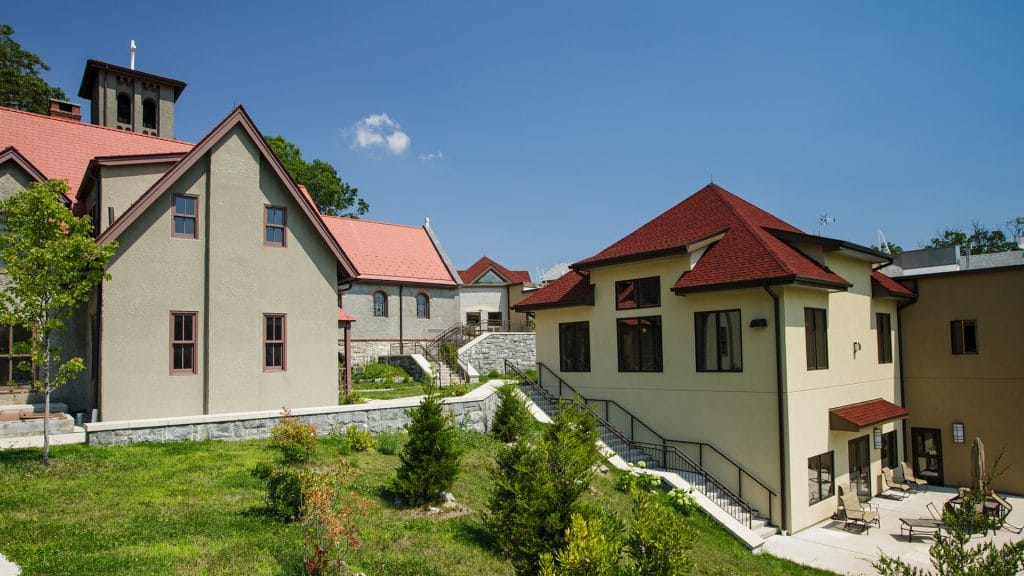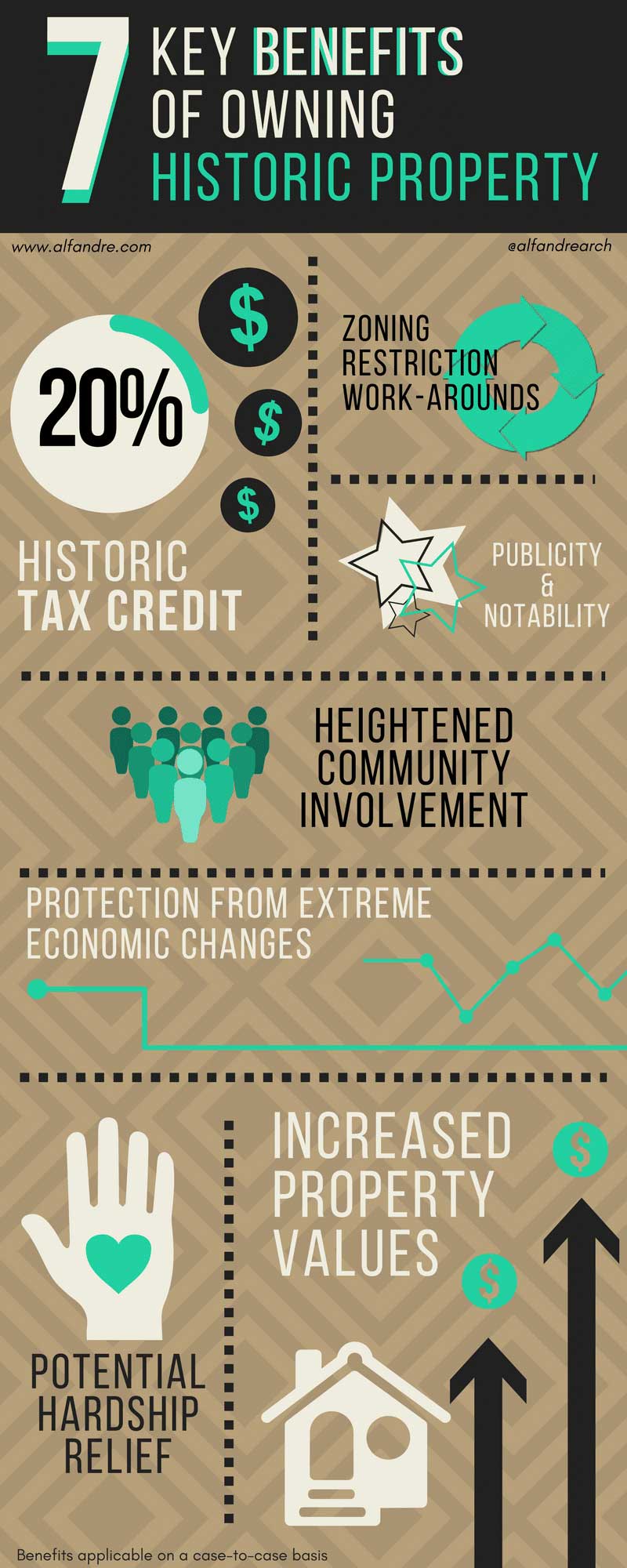Historic landmarks have a certain charm and aesthetic to them… not to mention great educational value! As a LEED Certified, sustainable design architecture firm, we see historic buildings, landmarks, and districts in an extremely positive light.
Amazingly, this is also how the government sees historic objects, too. Once an object, property, or district is deemed “historic,” the value increases and the benefits skyrocket. Here’s what you need to know about purchasing or owning a historic property.
Infographic:
Click graphic for full resolution.
Share this Infographic On Your Site
Copy and paste this code:
<h3>7 Key Benefits of Owning Historic Property Infographic</h3><p><a href="https://alfandre.com/infographic-benefits-purchasing-historic-property"><img src="https://alfandre.com/wp-content/uploads/7-Key-Benefits-of-Owning-Historic-Property.png" alt="7 Key Benefits of Owning Historic Property Infographic." width="800px" /></a></p><p><a href="https://alfandre.com">Infographic by Alfandre.com</a></p>
-
Receiving 20% Historic Tax Credit

Who doesn’t love tax credits? According to the Federal Tax Code ’86, a rehabilitated historic property could be eligible for a 20% tax credit. This credit applies to income-producing historic structures that are certified through the National Park Service. This is an incentive to restore historic buildings and sites and also promote local community economic successes.
The Federal Historic Preservation Tax Incentive program fosters economic revitalization and has leveraged over $33 billion in preservation investment. Click through our website to see some historic sites we have worked on.
Alfandre Architecture Rehabilitation Project
Tax Incentive FAQs -
Increased Property Values

Graymoor Friary, Garrison NY Preservation officers have stated that historic property could rise %5 to 35% in a decade. They also provide the value of stabilization of residence due to the historic preservation code.
Owners of historic sites are able to acquire an easement which will stay with the deeds of the property until.. well.. forever.
Historic properties tend to appreciate at higher rates as well. These aspects all contribute to higher property values and are in favor of the owner as well as the community. These are economic values, but let’s not forget about all of the intrinsic and educational values as well.
-
Zoning Restriction Work-Arounds

When working on a rehabilitation of a historic building, there is a possibility of waiving current zoning restrictions. To remain in accordance with preserving the nature of the historic site, an owner or developer may be able to bypass certain zoning restrictions, such as setback requirements, and building code laws.The preservation of the historic site is the utmost concern so an owner may be granted clemency during a revitalization.
-
Protection From Extreme Economic Changes

Some types of real estate are extremely sensitive to economic downturns, such as hotels. Investors and developers of hospitality estates take huge hits when the economy is on a downturn.Historic properties are not as sensitive to the economic cycle because preservation constitutes as a strategy for economic development. Economic factors that affect developers such as property price and employment do not as harshly impact the sustainable nature of a preserved landmark.
-
Heightened Community Involvement

A building or district that is deemed historic can serve as a symbol of a community’s heritage, culture, and story. It can serve as a tangible representation of an honored community.This helps create a sense of pride and unity in a community and encourages economic growth and prosperity. The owner or developer of the historic building will be “top of mind” within the community… which leads us to our next benefit.
-
Increased Publicity

Being well-known within a community is only beneficial if it is for good reasons. Being the owner of a historic site comes with communal respect and appreciation for taking on the task of preserving community heritage.Historical sites are hubs for community culture and star platforms for social media and blog posts of the “Top 10 things to see when in *Your County*”. The intrinsic value alone is a draw for people to come and see the historical property and the town.
The developer that takes on the task of revitalizing a piece of community culture immediately increases their personal and professional reach.
-
Hardship Relief

The last, and certainly not least, benefit is the safety net of potential hardship relief. If the owner is experiencing financial or economic trouble, is not able to upkeep their property, and/or establish it as an asset then they may be eligible for hardship relief.The owner must prove “the existence of hardship by establishing that it is unable to make any economically viable use of the property, where for income-producing purposes or for private use.” If the economic hardship is recognized, the government will step in and help.
Check out and share our infographic for an easy overview of all of the benefits:
Dive into our site to see: sustainable projects, case studies, and historic renovations.
-Alfandre Architecture, PC

